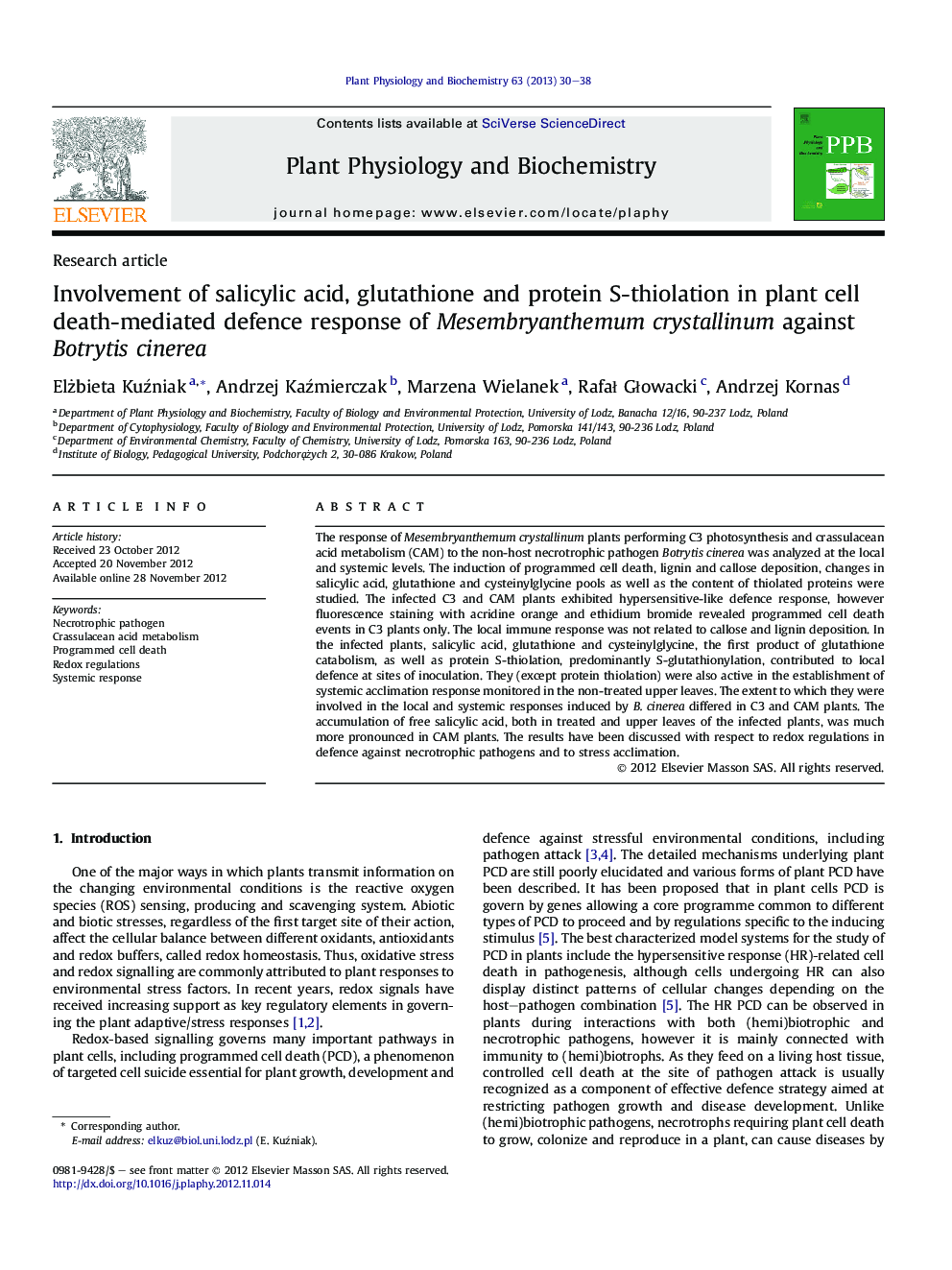| کد مقاله | کد نشریه | سال انتشار | مقاله انگلیسی | نسخه تمام متن |
|---|---|---|---|---|
| 2016044 | 1541958 | 2013 | 9 صفحه PDF | دانلود رایگان |

The response of Mesembryanthemum crystallinum plants performing C3 photosynthesis and crassulacean acid metabolism (CAM) to the non-host necrotrophic pathogen Botrytis cinerea was analyzed at the local and systemic levels. The induction of programmed cell death, lignin and callose deposition, changes in salicylic acid, glutathione and cysteinylglycine pools as well as the content of thiolated proteins were studied. The infected C3 and CAM plants exhibited hypersensitive-like defence response, however fluorescence staining with acridine orange and ethidium bromide revealed programmed cell death events in C3 plants only. The local immune response was not related to callose and lignin deposition. In the infected plants, salicylic acid, glutathione and cysteinylglycine, the first product of glutathione catabolism, as well as protein S-thiolation, predominantly S-glutathionylation, contributed to local defence at sites of inoculation. They (except protein thiolation) were also active in the establishment of systemic acclimation response monitored in the non-treated upper leaves. The extent to which they were involved in the local and systemic responses induced by B. cinerea differed in C3 and CAM plants. The accumulation of free salicylic acid, both in treated and upper leaves of the infected plants, was much more pronounced in CAM plants. The results have been discussed with respect to redox regulations in defence against necrotrophic pathogens and to stress acclimation.
► The redox-based responses of C3 and CAM plants to pathogen were studied.
► Salicylic acid and glutathione contribute to local defence and systemic acclimation response.
► Protein thiolation/glutathionylation is involved in local response to the pathogen.
► Redox signalling is affected by the type of photosynthetic carbon metabolism.
Journal: Plant Physiology and Biochemistry - Volume 63, February 2013, Pages 30–38